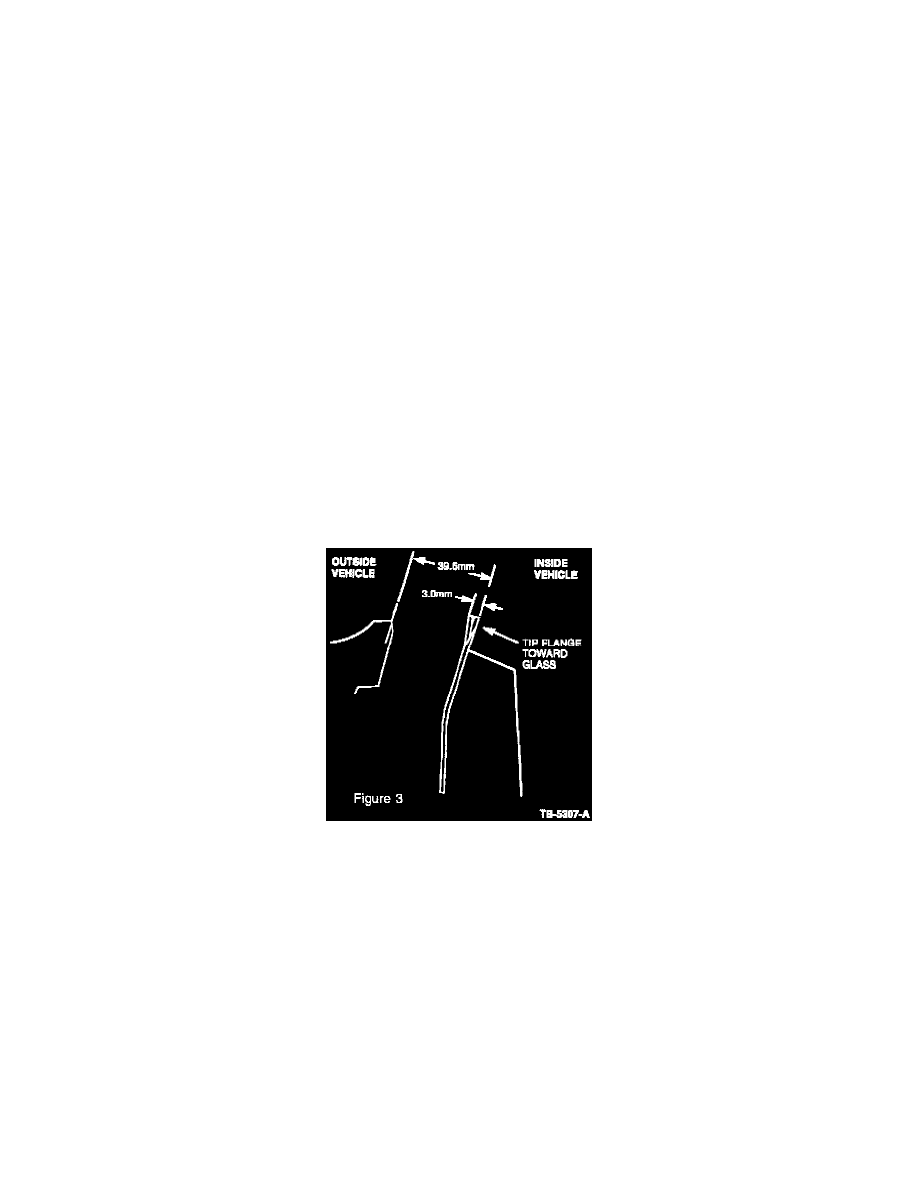Continental V8-4.6L DOHC VIN V (1998)

3.
Adjust the top of the door inboard so that the distance between the top of the door and the body is between 6 to 8 mm while maintaining front
door-to-rear door flushness.
NOTE:
FOR SERVICE TIPS ON ADJUSTING DOORS, REFER TO TSB 97-15-1.
4.
With the window down and the door closed, perform the 3X5" Card Test, as described in Steps 4a-4c, on the weatherstrip from the base of the
window at the A-pillar along the top of the door frame to the base of the B-pillar to assure good sealing contact between the door and the
weatherstrip.
a.
Insert a 3x5" card between the door and the weatherstrip at the base of the A-pillar with the door closed.
b.
Run the card up along the A-pillar.
c.
If the card easily moves at any location along the A-pillar, then the sealing contact between the door and the weatherstrip is insufficient and
the door should be adjusted to increase sealing contact. This test can only be used to evaluate the A-pillar sealing contact at the margin.
5.
Repeat Steps 1-4 for the front door on the passenger side.
Front and Rear Door Inner Belt Fit
On some vehicles, the front and/or rear door inner belt may not seal against the glass completely causing unwanted windnoise or roadnoise in the vehicle.
To check and repair inner belt fit, use the following procedure:
1.
From inside the vehicle with the window up, run a 3x5" card along the door inner belt from the rear of the belt to the front.
2.
If the card moves easily at any point along the belt, the window has inadequate sealing and windnoise or roadnoise may be heard from this area.
To correct this, the inner belt flange on the door must be adjusted.
3.
To adjust the inner belt flange, the inner belt and the door trim panel must be removed.
4.
With the door panel and inner belt removed, use a block of wood and hammer to bend the inner belt flange approximately 3 mm toward the
window glass to give the inner belt a snug fit against the window (Figure 3).
5.
Once the flange adjustment is complete, replace the door trim panel and inner belt.
6.
Retest the inner belt fit with a 3x5" card to make sure that the inner belt flange was adequately adjusted.
7.
Repeat Steps 1-6 for the remaining three (3) vehicle doors.
Rear Window Moulding Fit
Intermittent noise from the rear window (backglass) typically described as a "buzz" or "fluttering," and usually occuring at speeds above 97 km/h (60
mph) or when encountering air turbulence from a passing vehicle, may be exhibited. This noise may be caused by a loose backglass moulding and can be
repaired using the following procedure.
1.
Carefully pull upward on the backglass moulding along the top edge of the rear window.
2.
If the moulding pulls out at any point, this is the source of the backglass windnoise and sealer must be used to repair this vehicle.
3.
At the point(s) where the moulding pulls out, work Silicone Sealer (F6AZ-19562-AA), or equivalent meeting Ford specification
